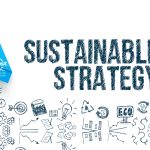Sustainability in the Restaurant Business: A Complete Guide to Waste Reduction
It wasn’t that long ago that sustainability was a buzzword that was thrown around like “synergy” or “taking something to the next level”. Over the years, sustainability has gone from a back-burner concern to a mission-critical aspect of how business is done. The restaurant business, with its increasingly eco-friendly consumer base is on the forefront of that movement. It’s not just about the food anymore. It’s about where the food came from, how it’s handled, and what happens to it after the sale. It’s about transparency, shifting the focus from the front of the house to the operational side of things, amplifying, and expanding sustainable practices to get the absolute most from your waste reduction efforts. Consumers want to know that they are spending their money with an entity that they trust.
But waste reduction is not just about customer appeal by any means. Reducing waste means reducing costs. Taking a page from the manufacturing industry, restaurants that work to achieve a zero-waste policy are shown to spend less, retain talents, as well as appeal to eco-conscious consumers.
Think Outside of the Trash Can
The restaurant industry has a unique opportunity to harness the sustainability trend and make it a standard business practice. The focus for restaurants always seems to fall, obviously, on food waste. And for good reason, a recent study from Champion 123.org on the business case for reducing waste had shown that “the benefit-to-cost ratio of comprehensive food waste reduction efforts state that for every $1 dollar invested in food waste reduction process, results in approximately $ 14 dollars of cost savings.” That being said, for a restaurant to truly be “sustainable”, waste reduction has to occur across the board – not just with food waste.
The days of simply being able to check “waste reduction” off of your list by simply putting out a recycling bin are long gone. Consumers have an increasing demand for transparency – and those higher expectations translate into proving that your restaurants implement authentic, comprehensive and effective waste elimination solutions. As you can see from the table below: your restaurants generate recyclable materials every single day that are often times not even considered.
Opportunities For Waste Reduction: Restaurants Generate A Lot Of Waste, But The Majority Are Recyclable Materials
Restaurant Guide to Deploying Waste Reduction Practices
Understanding that waste reduction has a direct correlation with your bottom line and putting those practices into action are two totally different things. Deploying an effective waste reduction program isn’t as complicated as it sounds:
- Understand Where You Are, and Where you Want to Be
Using data from your waste management service providers or data from an internal audit – you need to figure out how much waste you are creating right now on day one. If you’re working with multiple vendors, this can be a daunting task, but it is the only way to see how much work needs to be done.
- Optimize Ordering
Using data from your locations, look for improvements in ordering. Whether it is smaller packages of a specific produce to prevent spoilage, or smaller quantities of non-perishables that are stacking up on shelves, purchasing data is critical to reducing waste. Restaurants should consider leveraging demand planning software to optimize inventory on hand and minimize over-ordering.
Taking that thought process a step further, look for opportunities that are unique to restaurants. For instance, find produce vendors that offer discounts for produce that doesn’t meet “visual standards”. If a carrot is going to get peeled into strips, what difference does it make if it is straight? That’s an example of a cost-saving purchasing option that eco-conscious consumers absolutely LOVE – along with buying locally sourced goods, products made from recycled materials, and materials that are certified as compostable. Those little shifts in purchasing can make huge waves with eco-conscious consumers, who are quickly becoming the rule instead of the exception.
- Donate, Donate, Donate
Across the country right now, you can look in any dumpster at almost any business, not just restaurants, and find items that could have been donated to a worthwhile cause. Restaurants have the added benefit of food donation programs that are already in place and have been shown to work. Aside from the social impacts of food donation, restaurants are eligible for tax incentives for donated foods, and are protected by the “Good Samaritan Act”, which releases them from liabilities associated with donated food. There are several food donation platforms out there that have been evolving and growing, making donation easier than ever. Between the tax incentives and any donation platform costs, even if the financial impact is a wash – the social impacts are nearly incalculable.
- Recycle EVERYTHING
Businesses are quick to stop looking for things to recycling. The “big 3” (plastic, cardboard, paper) are as far as a lot of operations go. In the restaurant business you’ve got a lot more to consider, as the table above showed. Using a third-party company, or your own internal teams, keep looking for waste streams that can be diverted.
- Train, Educate, and Retain Employees
The best, most comprehensive recycling plan in the world won’t survive a team that doesn’t understand it. Employees from the C-suite to the fry cooks need to understand why the program is in place, and how their individual contributions to the plan make a difference. Getting employees invested to the program is what gives the program wheels. Offer incentives for adhering to the plan, and share results on a regular basis.
- Track Results and BRAG
At the end of the day, sustainability programs are just as much for saving money as they are for making it. Standing up among your competitors and showing that your operation wastes less, period, makes a statement that resonates with consumers. The market segment of environmentally aware consumers is doing nothing but growing, and their spending habits are getting more and more refined and focused. By collecting the right data accurately, restaurants have the ability to reach out to this ever-increasing segment of consumers. Imagine a table tent in each of your restaurants featuring your waste-elimination efforts at each location, or a blurb on each menu with waste reduction stats or ongoing milestones shared on your website and on social media. That kind of marketing has proved valuable for restaurant operations that have taken similar approaches with organic produce and locally sourced produce, so why not take a business model that is already working a step further? The right vendors and service providers can help your operation collect the data you need to show your customers that your restaurant is making strides to eliminate waste.
Just as sustainability isn’t just a passing trend, reducing waste isn’t a passing project. It is something that has to be done actively and intelligently. The results speak for themselves. Wasting less means spending less – it really is that simple. Not only do your margins get healthier in that scenario, but your customers acknowledge those efforts and are more willing to give you repeat business.
This article originally appeared in the RFMA Facilitator Magazine










